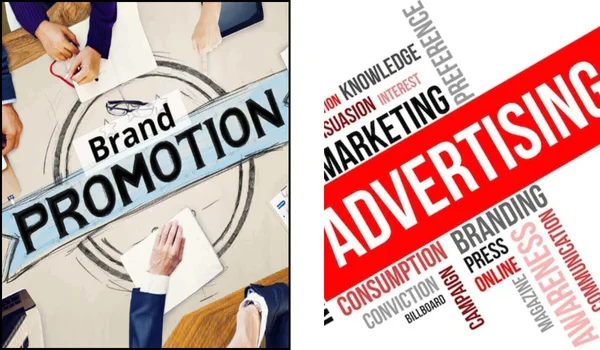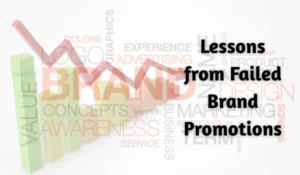In the dynamic world of marketing, the terms brand promotion and advertising are often used interchangeably. However, while they share some similarities, they serve different purposes in the broader scope of brand building. Understanding the distinction between brand promotion and advertising is crucial for businesses looking to create long-term brand value and immediate sales results.
As a brand promotion expert in India, I’ve worked with startups, SMEs, and large corporations to help define, promote, and advertise their brands effectively. In this blog post, I’ll break down the differences, purposes, and best use cases for both strategies — and help you decide when to use which.
Understanding Brand Promotion
What is Brand Promotion?
Brand promotion refers to the broader set of strategies used to enhance a brand’s visibility, reputation, and loyalty among consumers. It’s a long-term strategy focused on building emotional connections, brand identity, and trust.
This can include:
- Sponsorships
- Events and exhibitions
- Influencer marketing
- Social media storytelling
- Corporate social responsibility (CSR) initiatives
- Packaging and merchandising
- Public relations and media coverage
Purpose of Brand Promotion:
- Build a strong brand identity
- Foster customer loyalty
- Increase brand awareness
- Shape brand perception
- Encourage word-of-mouth marketing
Example in Indian Context:
Amul’s “Utterly Butterly Delicious” campaign and consistent engagement through quirky topical ads is more than advertising—it’s brand promotion. It builds a lovable personality for Amul, not just selling butter or milk.
Understanding Advertising
What is Advertising?
Advertising is a subset of marketing that involves paying to present a message to a target audience through a paid medium, with the primary goal of driving sales or generating leads in the short term.
It includes:
- TV commercials
- Print ads
- Digital banner ads
- Google Ads / Meta Ads
- Radio jingles
- Billboards and hoardings
Purpose of Advertising:
Promote a specific product or service
- Drive immediate conversions or sales
- Reach a mass audience quickly
- Increase market share
- Promote offers or discounts
Example in Indian Context:
Flipkart’s Big Billion Days campaigns are classic examples of advertising – catchy, offer-focused ads through TV, YouTube, and Google Ads that aim for massive sales during a specific time window.
Brand Promotion vs. Advertising: A Quick Comparison

| Parameter | Brand Promotion | Advertising |
|---|---|---|
| Objective | Build brand identity, trust, and long-term awareness | Drive sales, leads, and short-term customer action |
| Focus | Overall brand experience and emotional connection | Specific products, services, or offers |
| Time Frame | Long-term strategy | Short-term, campaign-specific |
| Cost Structure | Can include unpaid efforts (e.g., PR, organic social) | Typically paid media placements |
| Audience Engagement | High engagement, storytelling-based | Lower engagement, direct messaging |
| Mediums Used | Events, influencer marketing, CSR, PR, packaging | TV, print, online ads, hoardings, radio |
| Measurement Metrics | Brand recall, loyalty, engagement, perception | CTRs, sales, impressions, conversions |
| Emotional Appeal | Strong – builds a brand personality | Moderate – usually more transactional |
| Examples | Tata’s community work, Patanjali’s Indian brand push | Jio Dhan Dhana Dhan offers, LIC insurance ad blitz |
Which One Does Your Business Need?
1. Startups and New Brands
- Primary Need: Brand Promotion
- Why: You need to create awareness, not just push sales. Start with storytelling, influencer collaborations, and community-building to establish a memorable identity.
2. Established Brands Launching New Products
- Primary Need: Advertising
- Why: You already have brand recall. Now, advertise to sell and capture immediate attention for your new offering.
3. E-commerce and Retail
- Balanced Approach: Combine both
- Why: Use brand promotion for loyalty and repeat customers, and advertising for new user acquisition and offer-based campaigns.
Real-Life Example: Patanjali vs. Hindustan Unilever (HUL)
Patanjali initially focused on brand promotion by emphasizing “Swadeshi” and Ayurvedic identity, which resonated with the Indian middle class emotionally. Later, they scaled with advertising once the brand had traction.
In contrast, HUL relies heavily on advertising to maintain market leadership in segments like soaps and detergents but also uses brand promotion for products like Pureit (with water safety campaigns).
How They Work Together
Think of brand promotion as the foundation of a house and advertising as the decor and paint that grabs attention. Without a strong brand, advertising may lead to short-term sales, but not sustained loyalty. Without advertising, even a good brand can go unnoticed.
A successful brand uses both:
- Coca-Cola promotes itself as a brand of happiness and connection (promotion), while also regularly running festive and offer-based ads (advertising).
- Zomato uses quirky Twitter memes and influencer collabs (brand promotion) while also running performance ads for discounts and free deliveries (advertising).
Digital Era: The Blurred Lines
With the rise of social media and content marketing, the lines between promotion and advertising are blurred.
- A branded YouTube video can be both a promotion and an advertisement.
- Instagram influencer stories could promote brand lifestyle but may be paid – i.e., ads.
- Branded content partnerships (like Netflix and PepsiCo tie-ups) also lie at the intersection.
Conclusion
Understanding the difference between brand promotion and advertising helps you allocate resources better and craft more impactful marketing strategies. While advertising delivers short-term wins, brand promotion nurtures long-term relationships and customer retention.
If you’re a business in India—whether a local FMCG startup or a growing online brand—balance is key. Invest in advertising to boost visibility, but never neglect brand promotion that builds loyalty and lasting value.
🔑 Quick Tips for Indian Businesses:
- Use festivals like Diwali and Holi for promotional campaigns.
- Leverage regional influencers for authentic storytelling.
- Combine WhatsApp marketing (ads) with offline brand activities (promotion).
- Invest in brand storytelling via Instagram Reels, YouTube Shorts, and blogs.
Need Help with Your Brand Strategy?
As a brand promotion expert in India, I help businesses craft compelling stories, develop digital branding strategies, and execute high-impact campaigns that deliver both brand equity and revenue growth.
📩 Reach out if you want a tailored brand promotion plan!



